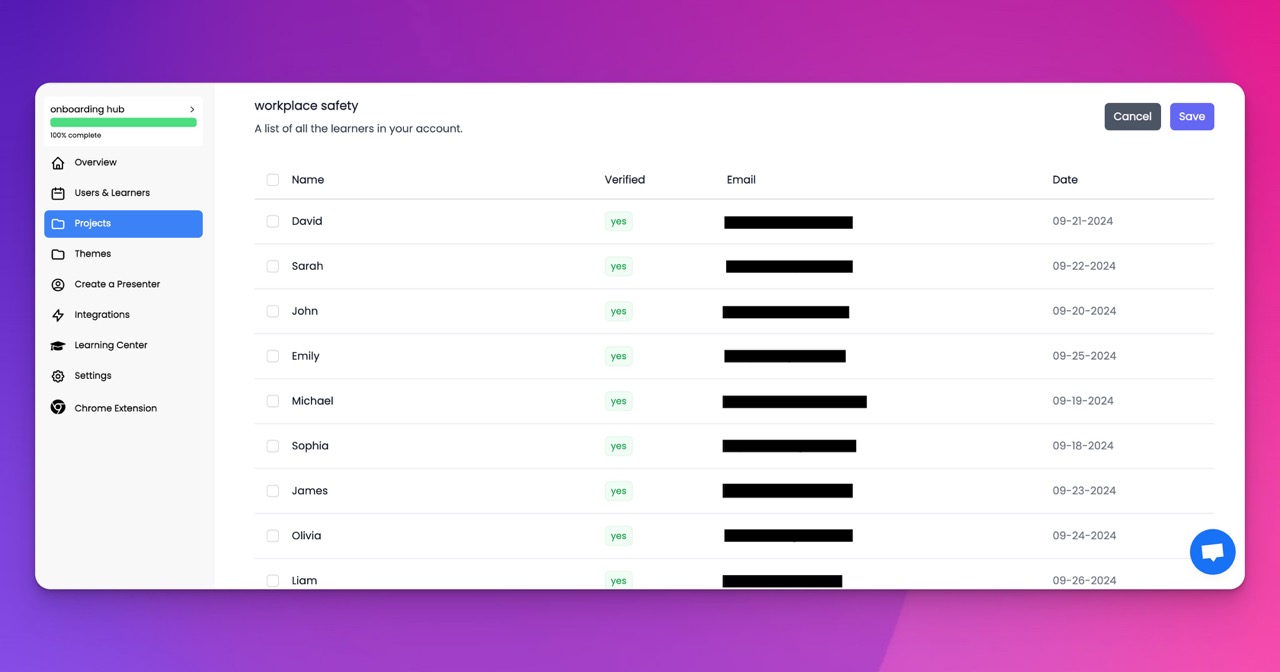🎉 Trainday now integrates with Zendesk and Hubspot 🎉 Trainday now integrates with Zendesk and Hubspot 🎉 Trainday now integrates with Zendesk and Hubspot
🎉 Trainday now integrates with Zendesk and Hubspot
🎉 Trainday now integrates with Zendesk and Hubspot
Contact
"Revolutionizing Employee Onboarding And Offboarding: Exploring The Benefits Of AI Avatars"
Revolutionizing Employee Onboarding and Offboarding: Exploring the Benefits of AI Avatars
In today's fast paced world, businesses are constantly seeking innovative ways to streamline their processes and improve efficiency. One area that has seen significant advancements in recent years is employee onboarding and offboarding. Traditionally, these processes have been time consuming and resource intensive, often involving extensive paperwork and manual training sessions. However, with the advent of AI avatars, these processes can be revolutionized, making them more efficient, engaging, and cost effective.
AI avatars, also known as virtual assistants, are computer generated characters that can interact with humans in a lifelike manner. These avatars are powered by artificial intelligence algorithms, allowing them to understand and respond to human queries, gestures, and emotions. When it comes to employee onboarding, AI avatars can play a crucial role in providing a personalized and immersive experience for new hires.
One of the key benefits of using AI avatars in onboarding is the ability to deliver consistent and standardized training. With traditional methods, new employees may receive varying levels of information depending on the trainer or the time available. AI avatars, on the other hand, can ensure that every employee receives the same content, eliminating any knowledge gaps and ensuring a level playing field for all. Additionally, AI avatars can provide 24/7 access to training materials, allowing employees to learn at their own pace and convenience.
Another advantage of AI avatars in employee onboarding is their ability to simulate real world scenarios. By creating virtual environments, new hires can practice their skills in a risk free setting, enabling them to gain confidence and proficiency before entering the actual workplace. This can be particularly beneficial for roles that involve complex procedures or high pressure situations, such as customer service or emergency response.
Furthermore, AI avatars can enhance employee engagement and interaction during the onboarding process. Traditional training methods often rely on lengthy presentations or written materials, which can be monotonous and disengaging. AI avatars, on the other hand, can use interactive elements such as quizzes, simulations, and role playing exercises to keep employees actively involved. This not only improves knowledge retention but also creates a more enjoyable and memorable onboarding experience.
While AI avatars have numerous benefits in onboarding, they can also play a crucial role in offboarding processes. When an employee leaves the company, there are various tasks that need to be completed, such as returning company assets, transferring knowledge, and conducting exit interviews. AI avatars can automate these processes, providing a seamless and efficient offboarding experience.
For instance, AI avatars can guide employees through the asset return process, ensuring that all company property is accounted for. They can also facilitate knowledge transfer by storing and organizing relevant information, allowing future employees to access it easily. Additionally, AI avatars can conduct exit interviews, collecting valuable feedback from departing employees and providing insights for improving the organization's practices.
In conclusion, AI avatars have the potential to revolutionize employee onboarding and offboarding processes. By delivering personalized and standardized training, simulating real world scenarios, enhancing engagement, and automating offboarding tasks, they can significantly improve efficiency, reduce costs, and create a more positive employee experience. As businesses continue to embrace digital transformation, AI avatars are poised to become an essential tool in the HR arsenal, transforming the way employees are onboarded and offboarded in the future.
Accelerate Compliance.
Deliver OSHA-Ready Courses Instantly.
Empower your team with data-driven training solutions tailored to your industry's safety standards. Stay compliant, reduce risks, and boost productivity with AI-powered course creation.
